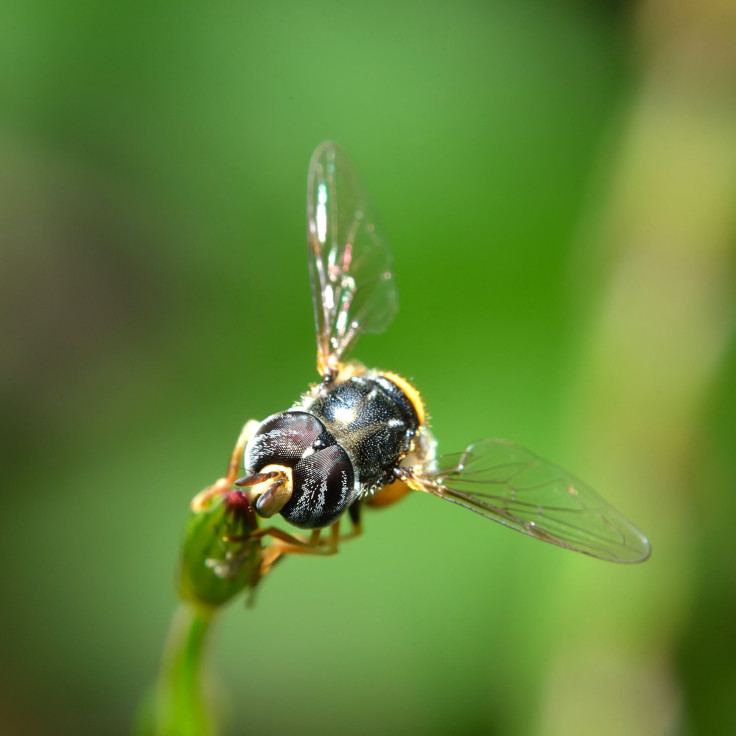Engineering Insects: Soon, Fruit Flies May Be Used To Detect Cancer

Insects may be creepy, but they are also used in laboraties to better understand diseases and test for new medicine. In particular, insects have been shown to detect cancer. Scientists have studied bees and their ability to smell faint metabolic gases that cancer cells emit during the early stages; they have also discovered how to train parasitic wasps to move toward particular odors.
Recently, scientists from the University of Konstanz in Germany and the University La Sapienza in Italy have shown that fruit flies — those annoying little things buzzing around your bananas in the kitchen — can actually be genetically engineered to glow when they come in contact with tumor molecules. This means they may be used in the future to detect the early stages of cancer.
Fruit flies don’t have a strong sense of smell like bees, which boast some 170 odor receptors, but they do have a sensitive olfactory system which is able to distinguish cancer cells from normal ones, the researchers found. Certain receptor neurons on fruit fly antennae are also able to figure out the difference between five types of breast cancer. The study was published in Nature.
During their research, the researchers developed a machine that blew an odor containing five strains of lab-grown breast cancer cells — as well as normal, healthy cells — into an area with fruit flies buzzing about. They examined the glowing spots visible on the flies’ antennae, as their receptor neurons identified and differentiated odors. “What really is new and spectacular about this result is the combination of objective, specific and quantifiable laboratory results and the extremely high sensitivity of a living being that cannot be matched by electronic noses or gas chromatography,” said Dr. Giovanni Galizia, neurobiologist and zoologist and author of the study, in a press release.
Because cancer cells and healthy cells all differ in their metabolism, they emit different odors. “Insect odorant receptors are excellent chemosensors with high sensitivity and a broad receptive range unmatched by current gas sensors,” the authors write in their study.
Fruit flies are useful and common insects to be used for scientific research, because their genome can be easily altered to understand mutated human genes. They have short life cycles and are cheap to breed. “The high sensitivity of the natural olfactory receptors, paired with the quickness with which we can generate these test results, might lead to the development of a cheap, fast and highly-efficient pre-screening that can detect cancer cells well before we can discover them with the present diagnostic imaging techniques,” Galizia said.
Source: Strauch M, Ludke A, Munch D, et al. More than apples and oranges - Detecting cancer with a fruit fly's antenna. Nature. 2014.



























